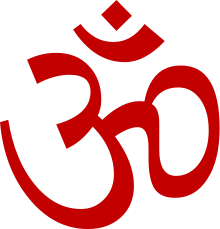By RK Rishikesh Sinha
The climax of the book comes when he proposes ‘astika’ and ‘nastika’ attributes, like the ISO Standard, to set the ‘Hinduism’ boundary straight and intact. The laxman rekha demarcates Hinduism with other Judeo-Christian faiths (Judaism, Christianity, Islam).
Our Sanatan Hindu Dharma has always been misunderstood with myths and misconceptions. Unfortunately, these have gone deep into the Hindu psyche through the western academia, mass media, and due to the lack of knowledge about our Dharma. Supported by western academia, these myths and wrong notions have been accepted unfortunately by westernised / colonised / christianised / liberalised Hindus of contemporary India. Their entire mission is to destroy everything that qualifies Hindu Dharma. Therefore, we Hindus are not able to define what the Hindu Dharma is.
Rajiv Malhotra’s book Indra’s Net, traces back the main source that are rooted in the western academia. And gives a befitting reply to each of the myths. In doing so, the author brilliantly defines Hinduism using the ‘forest’, the ‘computer industry’ and the ‘banyan tree’ as metaphors. He analyses step by step the various aspects, facets and constituents of the Hindu Dharma and establishes its unity which manifests itself in diversity and vice versa. It makes a very important point that there is an integral unity that exists amongst the various traditions in India as opposed to synthetic unity which is visible amongst the Abrahamic religions i.e. Christianity, Islam and Judaism. It is a must read book by Hindus and non Hindus to understand the length, breadth, and depth of the Hindu Dharma.
The climax of the book comes when he proposes ‘astika’ and ‘nastika’ attributes, like the ISO Standard, to set the ‘Hinduism’ boundary straight and intact. The laxman rekha demarcates Hinduism with other Judeo-Christian faiths (Judaism, Christianity, Islam).
How one could define Hinduism?
The moment we’re asked to define Hinduism. We blurt out ‘it is a way of living’. With the same logic, Osama Bin Laden, Hitler and people of other faiths have their own ‘way of life’. Therefore, Rajiv Malhotra has given three descriptions to define Hinduism.
Hinduism is like a forest
Rajiv Molhatra aptly defines Hinduism metaphorically with that of a forest. In the forest, thousands of species of animals, plants and microorganisms exist in a state of mutual independence. In the forest microcosm, there exist many worlds-within-world, which are never separate or isolated from one another. All the elements of forest are immensely adaptive to one another, and easily mutate or fuse into new forms over time. The forest loves to play host, and is never closed to outsiders. The growth of a forest is organic; new forms of life co-exist without requiring the destruction of prior ones.
Hinduism is like a banyan tree
Another metaphor that the author uses to define Hinduism is that of a banyan tree, beloved in myths and stories across Asia. The banyan tree is unique among trees in that the branches sprout and bow down to the ground, becoming additional roots of the same tree, forming eventually into a trunk in its own right. The tree is a single structure but functions like a complex, self-organising network, providing shelter and nourishment to birds, beasts and humans.
The metaphors of ‘forest’ and ‘banyan tree’ explain why people living in Hindu culture are comfortable with pluralism and complexity.
Another approach/ model that he uses to describe Hinduism is by making it equivalent to the computer industry. One can assemble different kinds of computers by selecting from array of components (disk drives, screens, operating software, memory, printers etc). Although there are many manufacturers making each component, they share a certain common standards and architectural principles. There are consumers in the market who can themselves assemble the components and make a computer. And there are those who go by systems integrators like Dell, HP, Toshiba etc.
In the Dharma tradition, the role of system integrators is played by individual gurus and sampradayas. Like the computer industry, Hinduism can be seen as:
- (a) open architecture: for spiritual quest as well as guidance for one’s life;
- (b) Modular: depending on one’s individual choice. One can choose one’s own ista-devata (personal deity of choice) and other devatas; extending it to other aspects like festivals, sacred texts, cosmological world view etc. It is this architecture that provides pluralism and flexibility;
- (c) Pre-packaged solutions: Practitioners who are incapable of configuring their spiritual path can go with this aspect by following any of the competing sampradayas;
- (d) Customization: it is a do-it-yourself option available for advanced learners/ practitioners who can configure a system responsively;
- (e) Research and Development (R&D): in house R&D by individuals and sampradaya can come up with ideas and practices in the marketplace;
- (f) No centralized control mechanism: like the internet, there is no center, no owner, no founder, no authority to enforce ‘right’ for all people;
- (g) Not history centric: there is no requirement to study the history of the system to participate.
These characteristics are not available with other desert-based religions (Islam, Christianity originated in desert). To safeguard the Hindu systems to work at best, like we scan our computers to delete malwares, Rajiv Malhotra in his insightful and first-of-its kind book Indra’s Net mentions some poison pills/ porcupine defence to guard it from ‘digestion’ and ‘self-destruction’.





Comments
Post a Comment
We all love comments. It is moderated